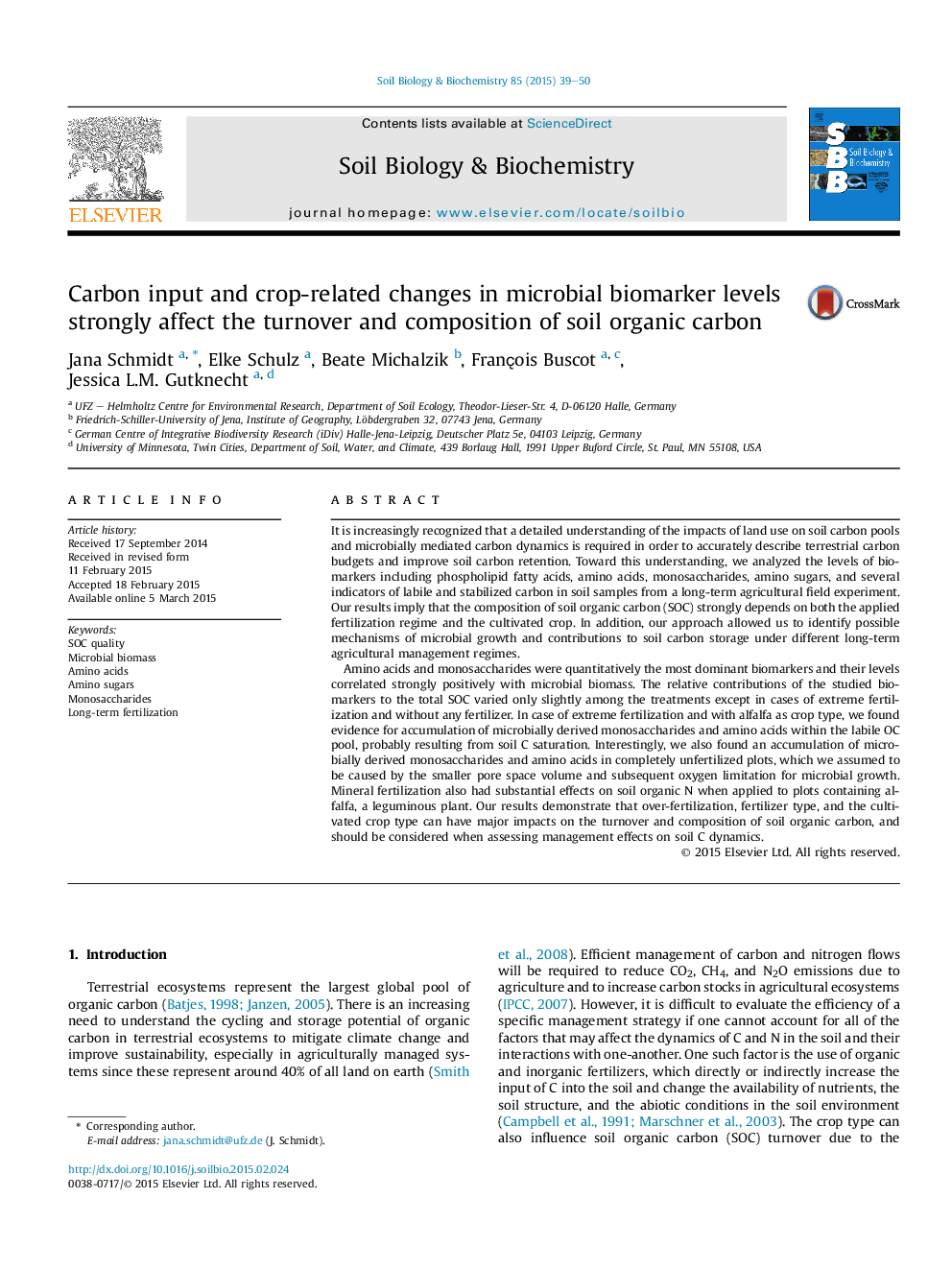| Article ID | Journal | Published Year | Pages | File Type |
|---|---|---|---|---|
| 8364146 | Soil Biology and Biochemistry | 2015 | 12 Pages |
Abstract
Amino acids and monosaccharides were quantitatively the most dominant biomarkers and their levels correlated strongly positively with microbial biomass. The relative contributions of the studied biomarkers to the total SOC varied only slightly among the treatments except in cases of extreme fertilization and without any fertilizer. In case of extreme fertilization and with alfalfa as crop type, we found evidence for accumulation of microbially derived monosaccharides and amino acids within the labile OC pool, probably resulting from soil C saturation. Interestingly, we also found an accumulation of microbially derived monosaccharides and amino acids in completely unfertilized plots, which we assumed to be caused by the smaller pore space volume and subsequent oxygen limitation for microbial growth. Mineral fertilization also had substantial effects on soil organic N when applied to plots containing alfalfa, a leguminous plant. Our results demonstrate that over-fertilization, fertilizer type, and the cultivated crop type can have major impacts on the turnover and composition of soil organic carbon, and should be considered when assessing management effects on soil C dynamics.
Related Topics
Life Sciences
Agricultural and Biological Sciences
Soil Science
Authors
Jana Schmidt, Elke Schulz, Beate Michalzik, FranÒ«ois Buscot, Jessica L.M. Gutknecht,
